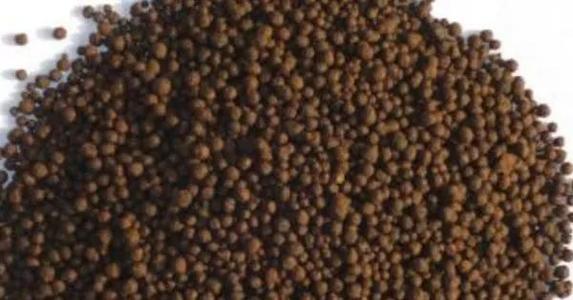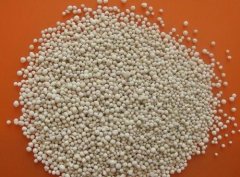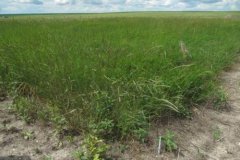What is organic fertilizer? What are the types and characteristics of organic fertilizers?
What are the types and characteristics of organic fertilizers? Do you know? You want to know the following. Come and have a look. The sources of organic matter materials can be divided into two categories: one is farm organic fertilizer, the other is commercial organic fertilizer. The composition of farm organic fertilizer varies a lot, while commercial organic fertilizer is based on the specific formula of products and various by-products, and the composition is more fixed.

The application of organic materials is one of the important topics in organic agriculture. It has many functions, not only for decomposing and releasing plant nutrients, but also for the improvement of soil physical and chemical properties and the availability of nutrient elements. There are many sources of organic matter materials used in agriculture, including plant, animal and microbial sources, some are fresh, some are dry, some are rotten, and there are also residues that are years, centuries or thousands of years old. Because the sources and decompositions are different, it is necessary to understand the characteristics of organic materials, which will help to choose and apply them properly.
Types and characteristics
Their types and characteristics are described below:
Farm organic fertilizer: including organic manure, plant residue, green manure and other organic matter.
1. Fat fat:
The excreta of all kinds of animals is a common organic fertilizer, such as poultry, cattle, pigs, sheep and other animals, including solid and liquid. The type and nutritional content of excreta are different from those of animals. Feed and digestive capacity are different, it is also an important influencing factor. Generally, chicken manure contains more nitrogen, pig manure usually contains more phosphorus than cow manure. Both solids and liquid bodies (urine) in animal excreta can be treated separately or mixed with absorbing materials (plants or adsorbents) for fertilizer use. Taiwan is moving towards enterprise management to raise pigs and chickens, and more attention should be paid to the treatment and application of these animal manure.
2. Plant residues:
Crop residues can be used as compost, compost or left in the field as organic fertilizer. although crop residues do not contain high nutrients, they can mainly improve soil structure and produce a lot of organic acids during decomposition, which can improve the effectiveness of soil nutrients, especially for the supply of trace elements.
Composting is the product of composting and partial decomposition of animal and plant wastes. Because there are many kinds of materials, even garbage can be used for composting, some basic understanding of composting is necessary:
The purpose of composting is to improve soil organic matter and growth promoters in order to maintain the soil, especially to soil physical, chemical and biological properties.
The decomposition of organic matter is carried out by microorganisms, so the environment for composting should be suitable for the conditions of microbial activity, such as adequate humidity and ventilation. In the production process, it needs to go through the steps of accumulation and flipping, as well as enough nitrogen to provide microbial reproduction. In order to make a better start of composting, mature compost or microbial inoculant can be used to accelerate the formation and decomposition of compost, which can produce high temperature and help kill germs, so it is also useful to cover the compost to increase the temperature.
The addition of minerals and other organic matter can accelerate the ripening of compost, especially the addition of nitrogen organic matter (legume powder and yeast powder) is the most effective for composting materials with high C / N ratio, often applying 0.l~1%. Calcareous materials can reduce the occurrence of acidity. For example, 0.3-0.5% limestone powder is commonly applied, which contributes to the quality of composting.
Soil animals are also often considered to have the effect of accelerating the decomposition of organic matter, but the practical application is less.
3. Green manure:
Green manure takes the whole green plants or stems and roots as direct fertilizer, and there are many kinds of green manure crops, including legumes, such as Sesbania, solar hemp, tiger melon beans, Ziyunying, soybeans and other green manure crops, as well as rape, radish and other non-legumes. Legumes can increase the source of soil nitrogen by symbiotic fixation of nitrogen in the air with rhizobium. Green manure crops, whether leguminous or non-leguminous, can be used to preserve the effect of soil nutrition, absorb soil nutrients into green manure plants, temporarily preserve them, reduce loss, and decompose and release nutrients when supplying green manure. And the effectiveness of phosphorus and trace elements in decomposition can be improved.
In agricultural production in Taiwan, from the point of view of long-term soil maintenance, although green manure cannot be planted once a year, it should be planted at least once every two or three years, especially in farmland where organic manure is rarely used. Special attention must be paid to the cultivation of green manure.
- Prev

Chemical fertilizer knowledge: the types and functions of chemical fertilizer, the advantages and disadvantages of chemical fertilizer
Is the chemical fertilizer easy to use? Now chemical fertilizers are not very popular, and now they are talking about organic fertilizers. What are the advantages of chemical fertilizers? Chemical fertilizer is a source of pollution: the application of a large amount of fertilizer to farmland is bound to have a great impact. Chemical fertilizer is usually one.
- Next

Ecological environment management: the distribution of weeds in non-cultivated land and the importance of protecting ecological environment
Weed ecology and distribution: we can see weeds everywhere, so there are a lot of weeds in the land we plant, so how do you control weeds? Is to buy herbicides? This is not ecological. If you want to be eco-friendly, you'd better be.
Related
- A one-day flower show brings 130 million yuan in orders! Nanhai, this Phalaenopsis exhibition is amazing
- What do the flower language and meaning of Lutheran tree mean? Precautions for planting Lutheran tree
- Encounter Chaoshan Kongfu tea, not without this cup of Phoenix single clump
- The durian market in Vietnam and Thailand is flooded. The price of imported durian has plummeted by 30-40% in a month.
- Shanghai solved the problem of local vegetable supply by planting 80,000 mu of green leafy vegetables.
- Wageningen University has become the best agricultural university in the world for the seventh time in a row.
- The strongest export season of South African grapes is full of challenges, with exports to Russia falling sharply by 21%.
- Sri Lanka is on the verge of bankruptcy, "Tea for debt" Organic Agriculture Revolution aggravates the Food crisis?
- Turning waste into earthworm manure and worm manure into organic fertilizer-A new choice for auxiliary farming
- Organic rice growers shoulder the responsibility of nurturing agricultural talents! Yinchuan Sustainable Farm with Organic Life Camp

